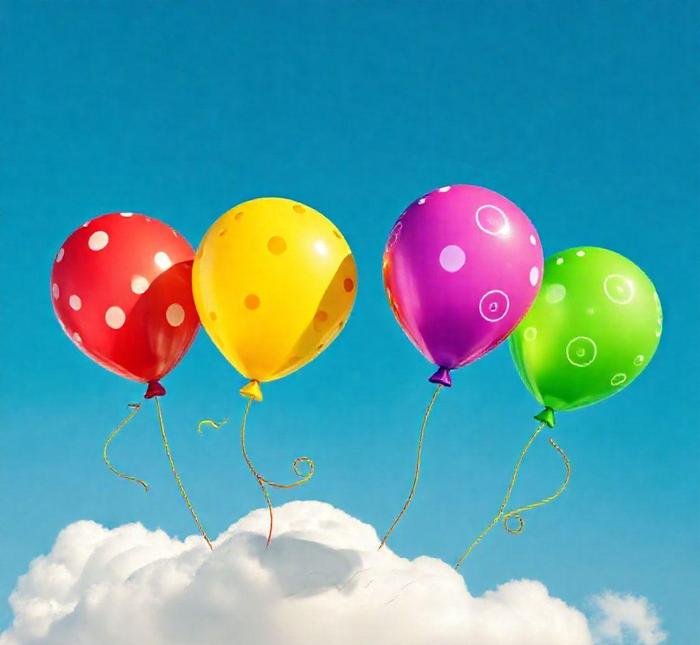- You are here:
- Home »
- words
- » 4 Letter Words That Start With C [LIST]

4 Letter Words That Start With C [LIST]
The English language is filled with words of varying lengths, and four-letter words are some of the most commonly used in everyday conversation. Among these, words that start with the letter ‘C’ are particularly diverse and serve multiple purposes in communication. From nouns and verbs to adjectives and adverbs, these words can be found across various contexts, making them valuable to both casual speakers and writers alike. Whether you’re playing a word game, trying to improve your vocabulary, or simply exploring the richness of the language, a list of four-letter words starting with ‘C’ can come in handy.
In this article, we will explore an array of four-letter words that start with the letter ‘C’, showcasing their meanings and uses. These words span a wide range of topics, from basic actions and descriptions to more specialized terms. By expanding your knowledge of such words, you can enhance your communication skills, boost your performance in word games like Scrabble, and deepen your understanding of the English language as a whole.
4 Letter Words That Start With C
1. Cafe
A cafe is a small restaurant that primarily serves coffee, tea, light meals, and snacks. Cafes are popular spots for socializing, working, or simply relaxing.
Examples
- She met her friends at the cafe for coffee.
- The cafe on the corner serves the best pastries in town.
2. Cake
A cake is a sweet dessert typically made from flour, sugar, eggs, and butter. It is often baked in an oven and decorated for special occasions like birthdays or weddings.
Examples
- She baked a chocolate cake for her friend’s birthday.
- The cake was decorated beautifully with flowers and frosting.
3. Cold
Cold refers to a low temperature or the sensation of chilliness. It can describe both weather conditions and physical sensations like shivering.
Examples
- The weather has been very cold lately.
- She caught a cold and had to stay home from work.
4. Card
A card is a small, flat, rectangular piece of paper or plastic used for various purposes, such as greeting, identification, or playing games. Common types include greeting cards, business cards, and playing cards.
Examples
- I sent him a birthday card.
- She collected greeting cards from all over the world.
5. Cool
Cool can describe something that is pleasantly cold or a person who is calm and composed. It also refers to something that is fashionable or impressive.
Examples
- He looked very cool in his new sunglasses.
- The breeze was cool and refreshing after the hot afternoon.
6. Cute
Cute refers to something or someone that is endearing, charming, or attractive in a playful or youthful way. It is often used to describe animals, children, or small things.
Examples
- The kitten looked so cute with its little paws.
- Her cute smile made everyone feel at ease.
7. Clue
A clue is a piece of evidence or information that helps to solve a mystery or problem. Clues are often used in investigations or puzzles.
Examples
- The detective found a clue that led to the thief.
- She gave me a hint, but I still didn’t get the clue.
8. Coat
A coat is a garment worn to keep the body warm or protected from the elements. It typically has sleeves and can be made from various materials such as wool, leather, or synthetic fabrics.
Examples
- She wore a warm coat to protect herself from the cold.
- His coat was made of soft wool and had a stylish design.
9. Care
Care refers to the act of looking after someone or something with attention and concern. It can also mean the responsibility for ensuring someone’s well-being.
Examples
- She takes great care of her plants.
- The doctor showed a lot of care in treating his patients.
10. Coin
A coin is a small, flat, round piece of metal used as currency. Coins often feature designs or symbols and are used in everyday transactions.
Examples
- He gave me a coin as a souvenir from his trip.
- The coin rolled off the table and onto the floor.
11. Code
Code refers to a system of symbols or instructions used to convey information, especially in computing or encryption. It is often used to create software, websites, or secure communication.
Examples
- The programmer wrote a line of code to fix the bug.
- She learned how to decode the secret message.
12. Curl
To curl is to form a spiral or curved shape. It can also refer to the act of twisting or coiling something, such as hair or a piece of string.
Examples
- Her hair naturally curls when it gets wet.
- The smoke began to curl upward from the fire.
13. Chin
The chin is the lowermost part of the face, located just below the mouth. It plays a role in expressions and is often associated with traits like determination or thoughtfulness.
Examples
- He rubbed his chin thoughtfully.
- She has a dimple on her chin that makes her smile even more charming.
14. Clip
A clip is a small device used for fastening or holding things together, such as paper clips or hair clips. It can also refer to a short segment of a video or audio recording.
Examples
- She clipped the coupon from the newspaper.
- He attached the document with a paper clip to the folder.
15. Cut
Cut refers to the action of dividing or trimming something using a sharp instrument. It can also refer to injuries caused by sharp objects.
Examples
- She used scissors to cut the paper into shapes.
- He received a deep cut on his finger while cooking.
16. Cart
A cart is a vehicle with wheels used for transporting goods or people. It is often used in farming, shopping, and delivery tasks.
Examples
- The farmer loaded the cart with fresh vegetables.
- He pushed the cart through the supermarket aisle.
17. Cane
A cane is a long, slender stick, often used for support while walking. It can also refer to the tall, flexible stems of certain plants, such as sugar cane.
Examples
- The elderly man used a cane to walk.
- She picked up a cane made of twisted wood.
18. Chop
To chop means to cut something into pieces, usually with a sharp tool like an axe or knife. It is often used in the context of food preparation or woodworking.
Examples
- She chopped the vegetables into small pieces.
- He was ready to chop the wood for the fire.
19. Club
A club can refer to a group or organization with a common interest or activity. It can also refer to a weapon or an implement used in sports, like golf.
Examples
- She joined a book club to meet people with similar interests.
- The golfer swung his club to hit the ball.
20. Cite
To cite means to reference a source of information, such as a book, article, or website. It is commonly used in academic writing to give credit to others’ work.
Examples
- The professor asked the students to cite their sources.
- In his article, he cited multiple studies to support his argument.
21. City
A city is a large and permanent human settlement, typically characterized by significant infrastructure, businesses, and cultural or governmental institutions.
Examples
- The city was bustling with activity as people rushed to work.
- She lived in a small city near the coast.
22. Cash
Cash refers to physical money, such as coins or banknotes, used to make payments. It is distinct from digital or credit-based transactions.
Examples
- He paid for the groceries with cash.
- She kept a stash of cash hidden in her drawer for emergencies.
23. Camp
Camp refers to a temporary outdoor living situation, often involving tents or shelters. It can also refer to recreational activities like hiking, fishing, or cooking outdoors.
Examples
- They went camping in the woods over the weekend.
- She set up her tent at the camp site.
24. Clap
To clap means to strike the palms of one’s hands together to produce a sound, usually to show appreciation or excitement.
Examples
- The audience clapped enthusiastically after the performance.
- She gave a loud clap to celebrate her friend’s achievement.
25. Claw
A claw is a sharp, curved appendage, typically found on animals like birds, cats, or reptiles, used for gripping, scratching, or hunting.
Examples
- The cat scratched the furniture with its sharp claws.
- The eagle’s claws were strong enough to grab its prey.
26. Chow
Chow is a term for food, particularly in informal contexts. It can also refer to a type of dog breed, known for its distinctive fur and mane.
Examples
- The dog eagerly waited for his bowl of chow.
- They served a delicious plate of chow for dinner.
27. Crib
A crib is a small bed for infants, often equipped with bars for safety. It is commonly used in homes and nurseries to ensure babies sleep securely.
Examples
- She put the baby to sleep in the crib.
- The old house had a wooden crib in the nursery.
28. Cage
A cage is a structure made of wire, bars, or mesh used to confine or house animals. It is often used for pets or zoo animals.
Examples
- The bird was kept in a small cage near the window.
- The lion paced back and forth in its cage at the zoo.
29. Core
Core refers to the central, most important part of something. In biology, it can refer to the central part of an organism, like an apple’s seeds, while in business, it can refer to a company’s essential function.
Examples
- The core of the apple was tough and inedible.
- She was at the core of the company’s marketing team.
30. Cell
A cell is the basic structural and functional unit of all living organisms. Cells can be specialized for different functions, such as in animals, plants, and bacteria.
Examples
- The scientist examined the cell under a microscope.
- Each cell in the body has a specific function.
31. Call
Call refers to making a communication, typically over the phone, or calling out to get someone’s attention. It can also refer to an action or decision made in certain contexts.
Examples
- She received a call from her friend in the evening.
- The manager made a call to confirm the meeting time.
32. Clad
Clad refers to being covered or dressed in a particular material or clothing. It is often used in the context of both fashion and architecture.
Examples
- She was clad in a beautiful dress for the ceremony.
- The walls of the building were clad in stone.
33. Cris
Crisp refers to something that is firm, dry, or brittle in texture. It can be used to describe foods like apples or weather conditions that are fresh and invigorating.
Examples
- She enjoyed the crisp autumn air.
- The salad was delicious with a crisp texture.
Historical Context

The English language, like any living entity, has evolved over centuries, and the 4-letter words that begin with the letter C provide an insightful lens into its historical development. To truly appreciate these words, one must understand how the English language, particularly its lexicon, has been shaped by diverse historical events, cultural exchanges, and linguistic shifts.
The history of English words starting with C traces back to Old English, the language spoken in England from around 450 to 1150 AD. Many of the earliest C-words are rooted in Old English or are borrowed from other languages through the centuries. These early words often referred to basic concepts: natural elements, societal roles, and domestic life. For example, cyn (meaning "kin" or "family") is an Old English word, illustrating how personal relationships were central to early English society. Similarly, ceorl referred to a common man, a concept deeply tied to the social structures of early medieval England.
As English evolved, particularly during the Norman Conquest of 1066, French influences began to pervade the language. French brought a wealth of C-words, many of which related to governance, law, and culture. Words like court (from Old French cour) became integral to the language, shaping how the English-speaking world viewed authority and order. The influx of Latin words in the Middle Ages, often through the Church, also contributed to a significant expansion of the C lexicon, including words like clerk (from Latin clericus) and council (from Latin concilium).
This historical context is essential because it highlights the dynamic nature of language. Words that begin with C tell a story of cultural exchange, societal changes, and the constant transformation of English. Whether they were born in the misty days of Old English or borrowed during the Middle Ages, these words reflect the way people thought, lived, and interacted with each other. Over time, these words have been refined and adapted to fit the needs of modern English, yet their deep-rooted origins continue to influence the way we use them today.
Word Origins And Etymology
When it comes to tracing the origins of 4-letter words that begin with C, one uncovers a fascinating array of linguistic histories. English words often come from a blend of Indo-European roots, Latin, Old Norse, Old French, and other languages. The etymology of these words not only offers insight into their original meanings but also reveals the evolution of language itself.
-
Cool – Perhaps one of the most ubiquitous modern C words, cool originates from the Old English word cōl, which meant “cold” or “chilly.” This word is deeply tied to the Germanic roots of the English language, which can be traced back to the Proto-Indo-European root gel- meaning "cold." Over time, cool evolved into a term that describes not just temperature but also a laid-back, composed demeanor, demonstrating how language shifts with cultural trends.
-
Cane – Cane, a word for the slender, flexible stem of certain plants, originates from the Latin canna, meaning "reed" or "tube." This word then passed into Old French as cane before being adopted into English. The use of cane was integral to a wide variety of ancient cultures, not just for the plants themselves, but also for tools, weapons, and even musical instruments, reflecting how these objects and their associated words permeated early societies.
-
Cold – Like cool, cold shares its roots in Old English, stemming from the word ceald, which in turn came from Proto-Germanic kaldaz. The word is ancient, with cognates in other Germanic languages, such as the Old High German kalt. The consistent use of the word for both temperature and emotional states (e.g., a "cold heart") demonstrates how metaphors are rooted in the fundamental experiences of people across time.
-
City – The word city comes from the Latin civitas, meaning "citizenship" or "city-state," which ultimately comes from civis, meaning "citizen." The spread of this term through Old French as cite and its eventual adoption into English reflects the development of urban life and governance in medieval Europe. The word encapsulates the rise of civilizations and the need to categorize complex social and political structures.
The etymology of C words reveals an intimate connection between language and culture. From the early days of the Germanic roots of English to the incorporation of Latin and French influences, these words not only provide insight into the evolution of English but also into the daily lives, needs, and values of the people who spoke the language.
Common Misconceptions
Despite their prevalence in the English language, 4-letter words beginning with C often give rise to misconceptions, particularly because of their versatility, range of meanings, and historical usage. Let’s delve into some of these common misunderstandings.
-
"Cool" always means ‘chilly’ or ‘cold’
A common misconception is that the word cool can only refer to temperature. While its original meaning indeed denotes a lower temperature, the modern usage of cool to describe something fashionable, impressive, or relaxed is an evolution of the word. This metaphorical shift began in the 1940s and 1950s, influenced by jazz culture and later adopted in wider American slang. Today, cool can refer to everything from a style of music to a person’s demeanor or even the perceived quality of an object.
-
"Cane" only refers to the plant stalk
While cane is widely associated with the long, slender stems of plants, especially sugarcane or bamboo, it is often misunderstood as a term used exclusively for plant matter. In fact, the word cane also has historical usage as a term for walking sticks, particularly those used by the elderly or those in need of mobility assistance. The association of cane with authority and social class (as in a "cane-wielding" figure) comes from this additional usage.
-
"Cold" and "cool" are interchangeable
While both cold and cool are used to describe temperature, they are not always interchangeable. Cold suggests a more extreme, uncomfortable, or potentially dangerous level of low temperature, whereas cool is often used to describe a more moderate or agreeable chill. This is particularly important when used metaphorically—one may say a "cool demeanor" but would rarely describe someone with a "cold demeanor" unless intending to express emotional detachment or unfriendliness.
-
"City" only means a large urban area
Another misconception is that the word city always refers to a large, bustling metropolis. However, historically, city was used to describe any settled community, particularly those that had achieved a certain level of civic organization, such as a city-state or a town with its own governance and autonomy. In modern English, the term city may refer to an area designated by law as a city, regardless of its size or population.
These misconceptions underscore the complexity of language and the ways in which words evolve over time. It’s important to understand not just the modern meaning of a word but also its historical usage and potential for metaphorical or figurative extensions.
Conclusion
In exploring 4-letter words that begin with C, we find ourselves tracing the footprints of history, culture, and linguistic evolution. These words, from cool to city, have deep roots in Old English, Latin, and other languages, revealing the myriad influences that have shaped the English tongue over centuries. The historical context of these words reflects the evolution of societies, from the rise of urban centers to the cultural shifts of the 20th century. The etymology of C words showcases the richness of human experience, from the basics of nature and family to the complexities of governance and identity.
Yet, as with all languages, the meanings of these words are fluid, subject to change over time. Misconceptions about words like cool, cane, cold, and city remind us that language is not static but a living, breathing entity that evolves with the needs of its speakers. Understanding these words in their full historical and etymological context enriches our comprehension of the language and the world it reflects.
In the end, the 4-letter words starting with C are more than just building blocks of communication; they are small yet powerful markers of humanity’s ever-changing relationship with the world and with each other.








